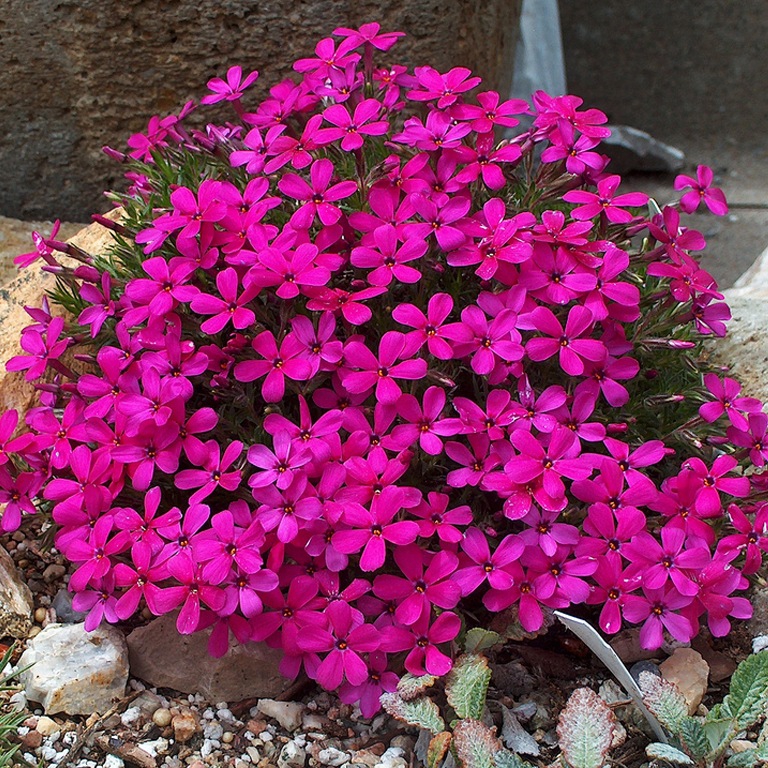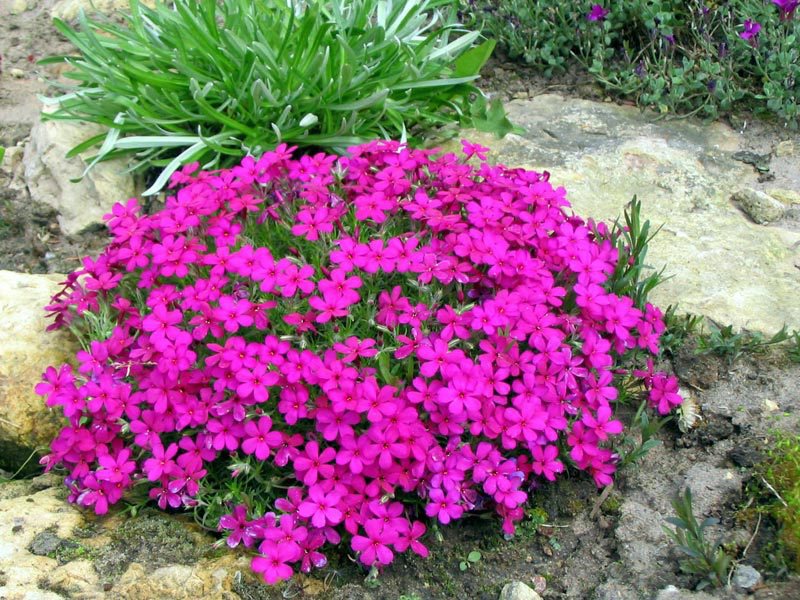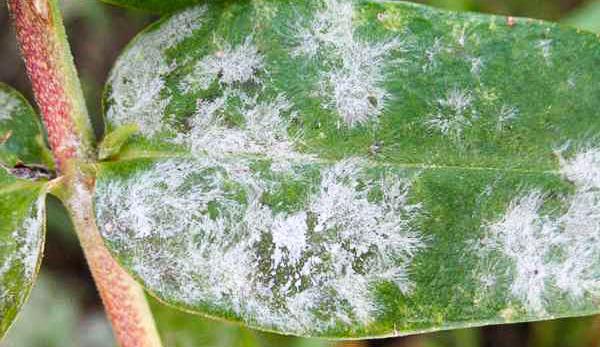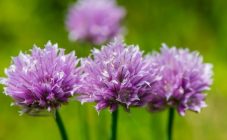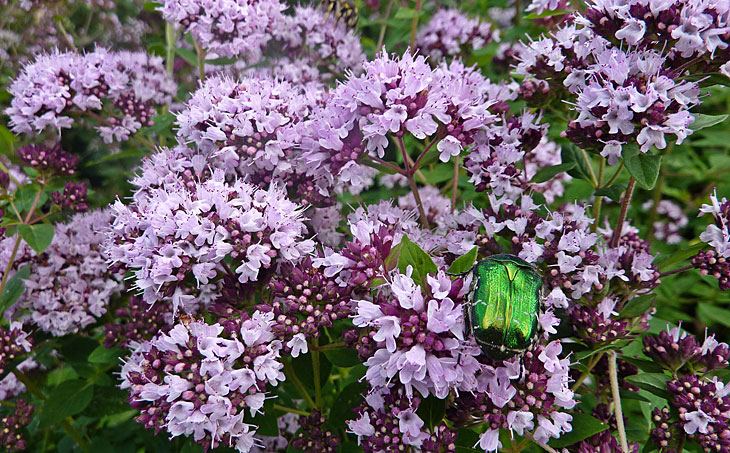Content:
Phlox are beautiful flowers with a pleasant aroma. They decorate parks, squares, streets of cities and villages. Grown in greenhouses, gardens, summer cottages. They belong to the genus of flowering plants of the Sinyukhovye family. It presents about 85 types of flowers, of which about 40 types are cultivated. Since their appearance in Europe (mid-18th century), more than 1,500 plant varieties have been bred by breeders.
Beneficial features
Among the various species, only Siberian phlox has healing qualities. Its stems, leaves, inflorescences have bactericidal, antioxidant, expectorant properties. Official medicine does not use this plant for medicinal purposes, and folk healers make infusions and decoctions from it for the treatment of colds, bronchitis, depression, and insomnia neuroses. Also used for diseases of the stomach, various neoplasms on the skin, cancer of the uterus, breast.
Origin, history
The homeland of phlox is North America. They came to Europe more than three hundred years ago. Then the Swede, natural scientist Carl Linnaeus named the flowers Phlox, which is translated from Greek as "flame", "fire".
Flowers were brought to the territory of Russia about 150 years ago. People called them "sitchiks".
Specifications
These herbaceous plants and shrubs are considered perennial crops, except for the annual Phlox Drummondi Hook (flowering June-November). There are both high-growing varieties and ground cover types. Flowers are characterized by high winter hardiness, fast growth.
Plants are bushy, compact (their height can be from 10 to 150 cm). Stems are straight, creeping, ascending, leafy. The flowers are formed into lush inflorescences (at least 80 - 90 pieces), which are located at the ends of straight, erect stems. The flowers themselves (their size is 2.5 - 5 cm) are bisexual, tubular, funnel-shaped. Each of them has 5 petals, stamens, and a pistil. The color palette is quite rich. From snow-white, blue, pink, crimson shades to dark purple, as well as variegated colors.
Leaves of plants are sessile, arranged oppositely, have regular oval or ovoid shapes. The phlox root system is powerful.
"Sinkers" bloom in different ways (it depends on the species). Early - end of June, middle - July, late - August-September. Flowering lasts for 8 - 10 days.
Plants are pollinated by insects that have long proboscis.
Types of phlox
Among gardeners, the following types are considered the most common and favorite:
Phlox subulate
The plant is short, light-loving, blooms early (late May - early June), abundantly. The bushes grow densely, completely cover the surface of the earth with a beautiful carpet, for which it has a second name - turf phlox. It got its name from the unusual leaves, they are like needles.
Phlox paniculata
The bush is covered with a lot of fragrant large flowers. Their colors are very diverse: white, light, bright, pink, lilac, lilac, striped colors. They begin to bloom in late August until early September.
Phlox Douglas
Low-growing variety (only 5 cm in height). Forms a living carpet. Flowering occurs twice per season (May - June, autumn). Inflorescences are pink, red, purple.
Phlox canadensis (splayed)
The variety is medium-sized (the height of the stems ranges from 15 to 40 cm). The flowers are very large in comparison with the previous species. Their color is white, blue-purple. Flowering time is May-June.
Perennial phlox: planting and care
For growing flowers, open, sunny, sheltered places are chosen. Partially shaded areas are allowed. They are needed by phloxes with a dark color, which tends to fade in the sun. Plants can be planted next to houses, buildings, as well as trees, shrubs, whose roots are not located in the surface layers of the soil. It is best to arrange flower beds on the southeast, east, southwest, west side of the site.
In order for phloxes to bloom luxuriantly, they need nutritious, loose, breathable, slightly moist (preferably loamy) soil. It is necessary to add humus, compost, ash, mineral complexes to the soil. If the place is clay, sand and peat are added. Sour soil is neutralized with lime (200 g / m2).
Prepare the flower bed in advance. For spring (last days of April - early May) - in autumn. In case of autumn planting (before early September) - 14 days before the start of work. The earth needs to be dug up several times.
Planting perennial phlox
Flowers are sown with seeds in the fall (before the onset of winter - in November - December). If snow falls, it must be removed from the garden. Achenes are scattered on the frozen soil at intervals of 4-5 cm. Sprinkled with earth with a layer of 1-1.5 centimeters, covered with snow. Seedlings should hatch in the spring. They dive when two real leaves appear. These sprouts will need to be planted. According to experts, this planting method provides up to 70% of seed germination, as well as lush flowering.
Phlox are planted depending on the varieties:
- ground cover flowers - leave a space of 40 cm between them;
- medium-sized plants - 50cm;
- tall crops - 70 cm.
Perennial seeds are sown for seedlings in March. The first shoots should appear after 7 days. Seedlings are provided with light, watering, after 14-20 days they dive. In the early days, small sprouts should be protected from the bright sun so that they do not get burned. Then the film or newspaper must be removed.
Before planting flowers, they are fed with minerals in the open ground. The dosage is made two times less than for adult specimens. When the plants give 4-5 leaves, they pinch the bushes. In May, phlox can be planted in a flower bed. Plants are placed in holes, the rhizome is straightened, sprinkled with earth, compacted. After the seedlings have been planted, they are watered abundantly (15 liters of water / m2). Allow the earth to dry out, loosen it, mulch with peat with a layer of 4-5 cm.
Care
Phlox is easy to care for. To grow flowers, they need good, but moderate watering in the morning or evening, loosening the soil several times per season, this must be done carefully, timely feeding:
- at the end of May, before the beginning of flowering, a choice of liquid mullein (25g / bucket of water), diluted with water chicken dung, nitrogen (0.5l / bucket of water), saltpeter;
- in early June (potassium salt or superphosphate (20 g / 10 l of water) is added to the manure).
- in early July (take the same organic matter without additives).
- at the end of July, phosphorus and potassium salt are used.
It is worth doing thinning. In the spring, when the flower shoots grow up to 5-7 cm, they are broken out, and also pinched.
Before the onset of frost, young and adult plants should be covered with earth, cut off the upper parts of the bushes, burned, covered with dry manure or humus (8 - 12 cm thick). If the bushes get sick, in October, after they have faded, they are sprayed with fungicides. In autumn, phloxes are transplanted and rejuvenated.
Reproduction
Phlox can be grown:
- seeds as described above;
- green cuttings, the procedure is carried out until mid-July. Shoots are cut off, leaving a couple of buds. Leave the cutting in water for an hour. Shorten, its length should be 6-10 cm. Plant the process, deepening by 1-1.5 cm.
- autumn cuttings. They are harvested in August. They are planted in the same way as green shoots.
- dividing the bush. This method is used when the plant is 3-4 years old. The plant is dug up, divided into parts. Transplanted to the desired location.
Diseases, pests
- Powdery mildew. Control measures: treated with a mixture: soda ash, manganese, soap, copper-containing preparations (Hom, Oksikhom).
- Verticillary wilting. Damaged bushes are removed along with the ground. The soil is treated with a solution of lime. Plants are sprayed with Gamair or Maxim.
- Nematodes (roundworms). Control methods: the affected plant fragments are removed, burned. Sprouts, shoots are transplanted. On a flowerbed with phlox, they plant nasturtiums, marigolds.
Phlox colors are bright, saturated. With proper care, following the rules of planting and caring for perennial phlox, these plants will be a great decoration for any garden.
